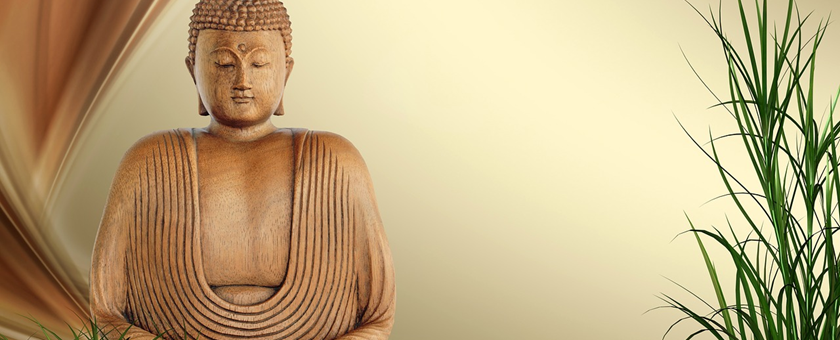Buddhism
More than 2,500 years have passed since the birth of Buddhism, which was created by Siddhartha Gautama, prince of the ancient Indian state of Kapilavastu (now Nepal). It is widely believed in the west that Buddhism originated in India.

Introduction of Buddhism
Buddhism was introduced into China from India around the first century. Since the 4th century, Buddhism has spread widely and gradually become the most influential religion in China. Due to different introduction time and channels, as well as different geographical, historical and social backgrounds, Chinese Buddhism is divided into three branches: Chinese Buddhism, Tibetan Buddhism and Pali Buddhism. Currently, there are about 200,000 monks and nuns under these three gates. There are more than 13,000 Buddhist temples, 33 Buddhist institutes and nearly 50 Buddhist publications in China.

Status of Buddhism in China
Chinese Buddhism is characterized by the coexistence of Mahayana Buddhism and Hinayana Buddhism, as well as the coexistence of external and internal Buddhism. Buddhism originated in India, developed in China, and spread to Japan and Korea. However, the classification of Buddhist doctrine itself has never played as crucial a role in Indian Buddhism as it does in China. Indian Buddhists threatened the values and socio-political structure of Indian society mainly by Hinduism and Islam and disappeared in India from the 9th to 10th centuries when Buddhism developed rapidly in China and China has become the true home of Buddhism all over the world. It is particularly worth mentioning that Buddhism has integrated Chinese culture and developed some branches with Chinese characteristics, such as Tibetan Buddhism and Hinayana Buddhism.
During the Wei and Jin Dynasties (220-420), the influence of Buddhism spread widely. During the Southern and Northern Dynasties (420-589), the ruling class further promoted the spread of Buddhism by building temples, monasteries, translating Buddhist sutras, and constructing grottoes, with the emergence of many famous monks, scholars, and teachers. By the Sui and Tang Dynasties (581-907), Buddhism had reached its peak and different Buddhist sects were formed in China. For a long time, Buddhism gradually took root in China's feudal society and integrated with Confucianism and Taoism. Its ideas had a remarkable influence on Chinese philosophy, literature and art.

Tibetan Buddhism
Tibetan Buddhism is mainly popular in Tibet, Yunnan, Sichuan, Qinghai, Xinjiang, Gansu, Inner Mongolia and other provinces and autonomous regions.
The system of precepts of Tibetan Buddhism is a complete Buddhist system, complete with precepts of Bhikkhu, Bhikkhuni, Koji and Yogis. Tibetan Buddhism has two meanings: one is the Buddhism formed in Tibetan areas and spread through Tibetan areas and influenced other areas (such as Mongolia, Sikkim, Bhutan, etc.). Second, it refers to the Buddhism spread in Tibetan language, such as the Mongolian, Naxi and other ethnic groups, even though they have their own language or characters, they still teach, argue, recite and write in Tibetan language and Tibetan words, so it is also called "Tibetan Buddhism". There are many Tibetan Buddhist monasteries in China, which are worth visiting to experience authentic Tibetan Buddhist culture. Famous Tibetan Buddhist monasteries include: Drepung Monastery, Ganden Monastery, Labrang Monastery, Sakya Monastery, Sera Monastery, Ta'er Monastery and Tashilhunpo Monastery.

Tibet -- The holy land of Buddhism
One of the most famous Buddhist shrines in the world, Tibet is home to many temples, mountains, caves and lakes. Lhasa is the holy city of Tibetan Buddhism and the Potala Palace is the center of Tibetan Buddhism. Potala Palace, built in the Tang Dynasty, is a treasure house of Tibetan Buddhist culture and art. Other famous Buddhist temples in Lhasa are Jokhang, sera, Drepung and Gandan temple.

Han Buddhism
Also known as Mahayana Buddhism, it is the religion of the Han and parts of the Bai, Naxi, Yi and Lahu ethnic groups. In the course of its development in China, it has been subdivided into many sects, including Tiantai, Sanlun, Farism, Ludian, Pureland, Zen, Huayan and Esoteric.
Since the introduction of Chinese Buddhism into China, it has been combining with traditional Chinese culture. In terms of painting, famous painters in the past Dynasties were good at Buddhist painting. For example, Cao Buxing of the state of Wu in The Three Kingdoms Period (220-280), Gu Kaizhi and Wei Xie in the Jin Dynasty (265-420) are considered to be the first three Buddhist painters in Chinese history. In terms of sculpture, Mogao Grottoes, Yungang Grottoes and Longmen Grottoes are treasures of Buddhist culture. In architecture, there are a variety of building types in Buddhist temples, including palaces, halls, pavilions and corridors. In addition, the translation of Buddhist sutras has exerted great influence on the development of Chinese phonology and translation theory. Buddhism also promoted the development of the almanac of Chinese medicine, history and astronomy.
At first, Han people only wore a large square cloth, with one side of the cloth wrapped from the left rib to the right shoulder. Later, the color and style of their clothes gradually increased, and they only wore standard clothes for Buddhist festivals or gatherings. They can wear their special ordinary clothes during their break time. For example, Buddhists wear robes of three different lengths, named "abaya," with a skirt at the ankle, a "short robe," a skirt at the knee, and a "half robe," with the hem covering the knee.
Important Buddhist festivals include Sakyamuni's birthday on the eighth day of the fourth month in the Chinese lunar calendar, Sakyamuni's enlightenment day on the eighth day of the eleventh month in the Chinese lunar calendar, and Sakyamuni's nirvana day on the fifth day of the second month in the Chinese lunar calendar. Of all the Buddhas, Kwan-Yin and Ksi-Zang Bodhisattva are the most popular, and they hold Buddhist ceremonies on the birthdays of the two Bodhisattvas.

Southern Buddhism
After the first division of Buddhism, primitive Buddhism was divided into upper and lower divisions. The school spread southward, prevailing in Sri Lanka, spreading to Burma, Thailand and other southeast Asian regions, and then into China's Yunnan and other places. It's called southern Buddhism. The language used in the Tripitaka scriptures is mainly Pali, so it is also called Pali Buddhism. Southern Buddhism inherits the system of "Theravada Buddhism" in Buddhism, and follows the teachings and practices of the Buddha and his disciples, so it is also called Theravada Buddhism. Southern Buddhism has exerted profound influence on the social life and culture of Dai Nationality. Dai language, Dai calendar and Dai religious festivals are the products of the integration of Southern Buddhism and local culture. According to tradition, a Dai boy must be an assistant for a certain period of time, from a week to a few months, until he reaches a certain age. After that, most people will return to the world, but a few will stay and continue to develop their morality and become Buddhists.

Huihe Buddhism
Since the end of the 19th century and the beginning of the 20th century, a great number of ancient Uygur documents have been unearthed in the western regions and Dunhuang, most of which are Buddhist. These documents have filled in many gaps in historical records and provided previously unknown materials for the study of ancient Uygur Buddhism, history, literature and language, which had attracted extensive attention from the international academic community and produced a large number of research results. The study of Huihu Buddhist literature can be said to be the most brilliant field in the study of ancient Buddhism in the western regions in the 20th century. It is of great significance to summarize and review these achievements at the turn of the century.

Influence of Buddhism on China
The influence of Buddhism on Chinese culture is profound, not only in religion, but also in literature, art, traditional customs and so on.
Chinese literature, such as novels, lyrics and even artistic creation, is closely related to the translation and interpretation of Buddhist sutras. Many Chinese literati love to read sutras. Their imagination and writing skills are inspired, which has a direct impact on the development of Chinese literature. Dream of Red Chambers, Journey to the West and other famous works are deeply influenced by the two novels in terms of structure and writing technique, which have high literary value.
Chinese ancient architecture, represented by Buddhist temples, is graceful and magnificent, and its form is the inheritance and imitation of Indian primitive Buddhism. With the rise of Buddhism in China, the development of sculpture, painting and frescoes accelerated. Take the Yungang Grottoes in Datong City, Shanxi Province as example. It represents the outstanding Buddhist grottoes art of the fifth and sixth centuries in China.


 Flow us
Flow us

